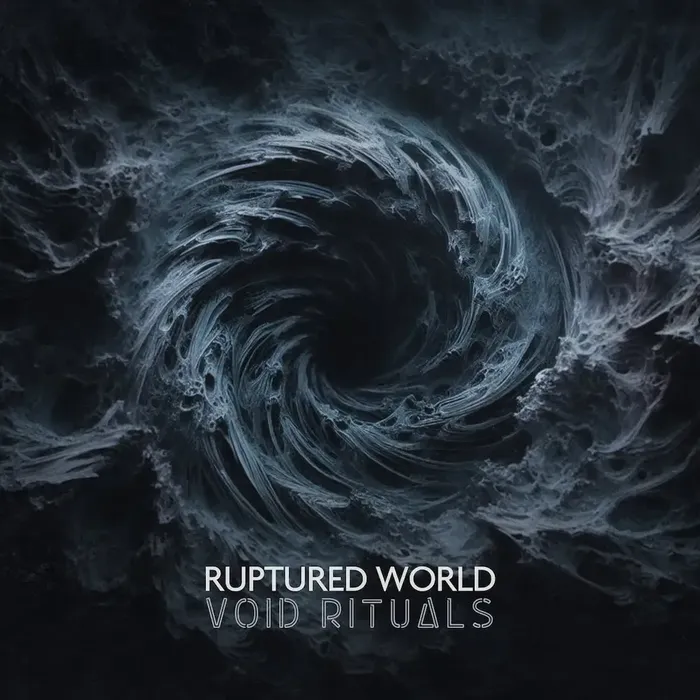Void Rituals by Ruptured World (Review)

Last September, I delved into the dark ambient storytelling of Ruptured World, the musical alter ego of Scottish author Alistair Rennie. Utilizing ominous soundscapes, static-laden narration, scattered radio broadcasts, and field recordings, Ruptured World’s “Planetary” series of albums creates a unique sci-fi/horror narrative. That said, Rennie’s latest album, Void Rituals, largely eschews the harrowing narration and radio broadcasts. However, the ominous soundscapes are still intact — and remain as haunting as you’d expect.
Song titles like “Prophecies of the Vision Zero,” “Canticle for a Dying World,” and “Explosions of Distant Magnitudes” handily set the mood for an album that extends Rennie’s brand of mystical sci-fi, one that chronicles “the visions of the Seers of ancient pasts and unknown futures” who “[project] their mind’s eye into the scattered minutia of the spacetime continuum” (as Rennie explicates in the album’s liner notes). It’s a very cinematic work; indeed, it’s rather easy to envision movie scenes as Void Rituals plays, scenes depicting millennia-old alien temples where black-robed monks go about fulfilling their arcane duties with the aid of bizarre technologies.
High-minded concept aside, Void Rituals remains yet another evocative bit of dark ambience from Rennie, and it’s all the more interesting thanks to the diverse sonic coloring and shading that he employs. Unlike so many dark ambient recordings, which can easily fall into cliché, Void Rituals isn’t all bleak, monotonous drones and walls of abyssal, Cthulhu-esque sound.
Despite its violent-sounding title, “Explosions of Distant Magnitudes” is quite subdued with its drifting, Vangelis-esque synth arrangements, which only makes it all the more emotionally resonant. Songs like “Canticle for a Dying World,” “The Gods They Have No Eyes to See Us,” and “Equations of Clock-time Versus Lightspeed” employ forlorn musicality, be it wandering synth melodies, bent piano notes, or, in the case of the second song, flutters of alien-sounding jazz — all perfect soundtrack material for the movie that will almost certainly play in your mind as you listen to the album’s eleven songs.